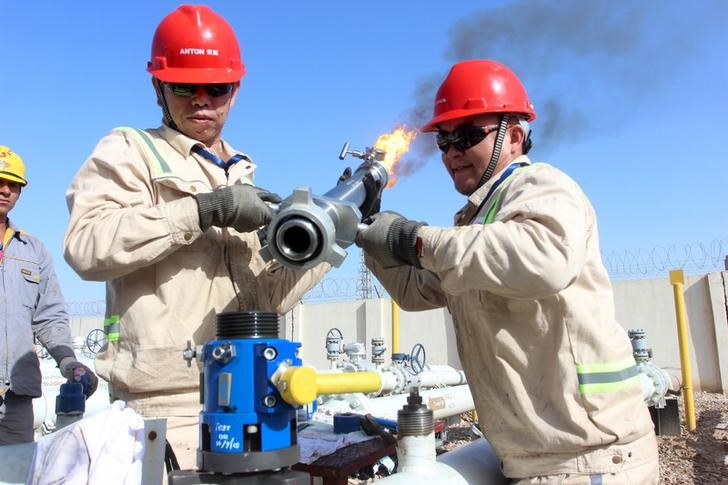Investing.com - Crude gain in Asia held steady on Friday after China GDP figures beat expectations and with the inauguration of Donald Trump at the 45th president of the U.S. ahead likely to set the market tone, while data on U.S. shale drillers will be in focus for the extent of the supply response to higher prices.
Crude oil for February delivery on the New York Mercantile Exchange rose 0.23% to $52.24 a barrel. On the ICE Futures Exchange in London, Brent oil for March delivery was last quoted up 0.20% to $54.29 a barrel.
China's gross domestic product (GDP) grew 6.8% year-on-year in the fourth quarter, slightly beating expectations by analysts of 6.7% growth for the calendar year, but in line with estimates from the head of China's state planning agency.
The figures likely signaled that China's economic growth is starting to stabilize as it transitions from heavy manufacture to domestic-led consumption.
For the quarter-on-quarter GDP figure the increase of 1.7% as expected. Industrial production gained 6.0%, a tick below the 6.1% rise seen, while retail sales jumped 10.9%, beating the 10.7% increase expected.
Earlier, Federal Reserve Chair Janet Yellen said that running a "hot" economy for an extended period would be a risk.
"I think that allowing the economy to run markedly and persistently "hot" would be risky and unwise," Yellen said in remarks prepared for delivery to the Stanford Institute for Economic Policy Research.
While there are no signs as yet that the Fed is behind the curve or the economy is in danger of a sudden surge in inflation, she said, "I consider it prudent to adjust the stance of monetary policy gradually over time."
Ahead on Friday comes drilling data from oilfield services firm Baker Hughes that will be closely watched by the market. U.S. oil drillers cut rigs, figure released the previous Friday showed, by 7 rigs to 522.
Overnight, West Texas Intermediate oil pared gains in North American trade on Thursday, after data showed that oil supplies in the U.S. registered an unexpected inventory build.
The U.S. Energy Information Administration said in its weekly report that crude oil inventories jumped by 2.347 million barrels in the week ended January 13. Market analysts' had expected a crude-stock draw of 0.342 million barrels, while the American Petroleum Institute late Wednesday reported a supply drop of 5.04 million barrels.
Supplies at Cushing, Oklahoma, the key delivery point for NYMEX crude, declined by 1.274 million barrels last week, the EIA said. Total U.S. crude oil inventories stood at 485.5 million barrels as of last week, according to press release, which the EIA considered to be “near the upper limit of the average range for this time of year”.
The report also showed that gasoline inventories increased by 5.951 million barrels, compared to expectations for a build of 2.023 million barrels, while distillate stockpiles fell by 0.968 million barrels, compared to forecasts for a gain of 0.162 million. The data was released one day later than usual due to the holiday last Monday.
The data release came after the monthly oil market report from the International Energy Agency (IEA) showed that world oil markets are slowly tightening as demand rises.
Commercial oil inventories in the major industrialized countries fell for a fourth consecutive month in November, the IEA said, although they remained more than 300 million barrels above the five-year average.
The IEA said output cuts announced by the Organization of the Petroleum Exporting Countries and 11 non-OPEC producers in November had "entered their probation period" and that it was too early to see what level of compliance had been achieved.
January 1 marked the official start of the deal agreed by OPEC and non-OPEC member countries such as Russia in November last year to reduce output by almost 1.8 million barrels per day to 32.5 million for the next six months.
The deal, if carried out as planned, should reduce global supply by about 2%.
A monitoring committee charged with tracking adherence to the global deal is due to meet in Vienna for the first time on January 22.
